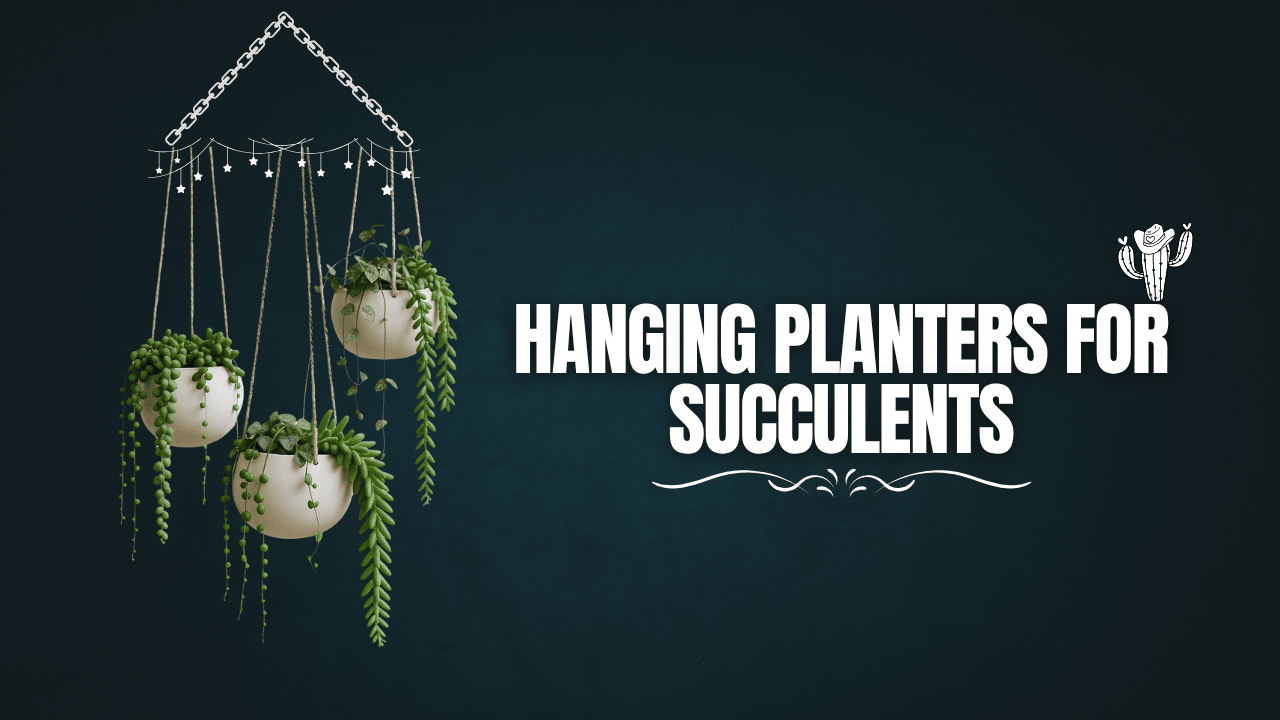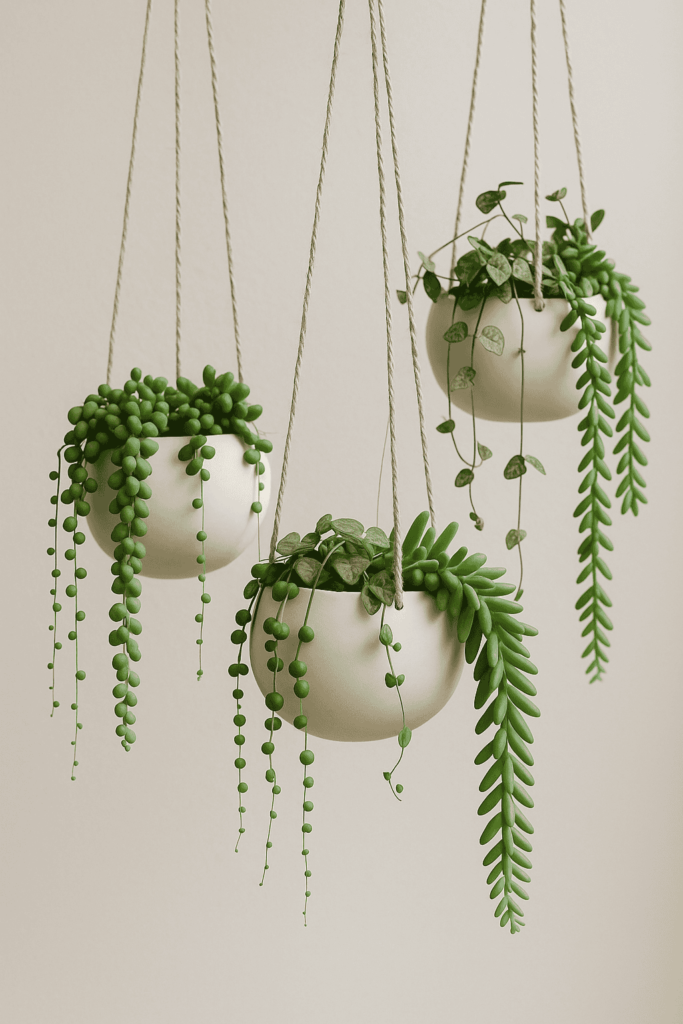Hanging planters for succulents are more than just a design trend—they’re a smart, space-saving solution for anyone looking to add a splash of greenery to their living space. Whether you live in a cozy apartment in Brussels or a modern townhouse in Amsterdam, these vertical plant displays can transform small corners into vibrant mini gardens.
Succulents, especially mini succulents and mini cactus varieties, thrive in hanging containers due to their low-maintenance nature and visual appeal. With the right container and care, these plants can grow beautifully while enhancing your interior or outdoor décor.
The Benefits of Hanging Succulents
1. Space Efficiency in Urban Homes
In city living where space is often limited, hanging planters maximize vertical areas like walls, ceilings, or balconies. You don’t need a large garden or windowsill—just a hook, rope, or shelf can turn unused areas into mini green sanctuaries.
2. Visual Impact and Aesthetic Appeal
Succulents like the String of Pearls or Burro’s Tail naturally drape over pots, creating a cascading effect that is visually striking. A group of hanging mini succulents can create an artful, textured display that’s both calming and stylish.
3. Better Air Circulation for Healthier Growth
Elevation isn’t just aesthetic—better airflow around hanging succulents reduces the risk of mold and pests. It encourages stronger, more vibrant growth, which is especially important for species that store water in their leaves.
Types of Succulents That Thrive in Hanging Planters
Trailing and Cascading Varieties
Not all succulents are ideal for hanging displays. The best choices are those that naturally grow downward or spread out attractively. Here are some favorites:
-
String of Pearls (Senecio rowleyanus) – Unique, bead-like leaves that cascade elegantly.
-
Burro’s Tail (Sedum morganianum) – Thick, trailing stems full of fleshy, teardrop-shaped leaves.
-
String of Hearts (Ceropegia woodii) – Heart-shaped foliage with a romantic trailing habit.
-
Donkey’s Tail – Similar to Burro’s Tail but more compact and denser in appearance.
-
Trailing Jade (Senecio jacobsenii) – A hardy option with vivid green, curved leaves.
Choosing the Right Hanging Planter
What to Look For in a Planter
-
Drainage Holes – Essential for avoiding root rot. Succulents hate soggy roots.
-
Material – Terracotta and ceramic offer breathability; plastic is lightweight and affordable.
-
Weight Support – Ensure that your ceiling hooks or brackets can support the planter’s weight when watered.
-
Size – Choose a container large enough to support the roots but not so big that excess soil retains water.
Pot Designs That Work Well
Modern pots in minimalist white, geometric patterns, or natural textures pair beautifully with the succulent’s organic shapes. Macrame hangers, wall-mounted shelves, or hanging bowls are all excellent display options.
How to Care for Hanging Succulents
1. Watering Wisely
Succulents are drought-tolerant. In hanging pots with less soil volume, overwatering becomes an even bigger risk. Always check if the top inch of soil is dry before watering. Water slowly until it starts draining, then stop.
2. Proper Lighting
Bright, indirect light is best. Direct afternoon sun can scorch leaves, while too little light will cause leggy growth. In the Netherlands and Belgium, south-facing windows or light-filled rooms are ideal spots.
3. Soil Matters
Use a gritty, well-draining soil mix—preferably one made for cacti and succulents. You can also make your own by mixing potting soil with perlite or coarse sand.
4. Seasonal Adjustments
Reduce watering frequency in the winter. Most succulents enter dormancy during colder months and require minimal care.
Common Mistakes to Avoid
-
Overwatering – This is the number one killer of succulents.
-
No Drainage – Hanging pots without holes trap water.
-
Poor Light Placement – Without enough light, your plant becomes weak and elongated.
-
Incorrect Pot Size – Too much soil holds excess moisture.
Indoor vs Outdoor Hanging Succulents
Indoor Advantages
-
Controlled temperature and humidity
-
Aesthetic enhancement of living rooms, kitchens, or bathrooms
-
Protection from pests and harsh weather
Outdoor Perks
-
Increased light exposure
-
Natural air movement
-
Great for patios, balconies, and verandas
In Belgium and the Netherlands, outdoor placement is ideal during spring and summer. When frost is expected, bring your succulents indoors.
Mini Cactus and Mini Succulents: The Ideal Match for Hanging Pots
Mini cactus varieties are trending for good reason—they’re adorable, require almost no maintenance, and fit perfectly into smaller hanging containers. Pair them with textured ceramic or glass pots for a clean, contemporary look.
Succulux.be – Your Trusted Source to Buy Hanging Succulents and Modern Pots
If you’re looking to buy plants online in Belgium or the Netherlands, Succulux.be is your go-to destination. They offer a curated selection of mini succulents, mini cactus, and modern hanging pots, all shipped with care and attention to quality.
Whether you’re a beginner or a plant enthusiast, Succulux.be makes it simple and satisfying to buy online plants and transform your space with greenery.
FAQs: Hanging Planters for Succulents
Can I use any succulent in a hanging planter?
No. The best succulents for hanging planters are those with trailing or cascading growth habits, like String of Pearls or Burro’s Tail.
How often should I water my hanging succulent?
On average, once every two weeks. Always let the soil dry completely between watering to prevent rot.
Do I need special soil for hanging succulents?
Yes. Use a well-draining cactus mix, or create your own with potting soil and perlite.
Can hanging planters be kept outdoors year-round?
Not in cold climates. In Belgium and the Netherlands, bring your succulents indoors before winter.
What type of pot is best for a hanging succulent?
Lightweight materials like plastic or resin are best for hanging. Ensure there are drainage holes.
How do I keep my succulent from falling out of the planter?
Use compact soil and plant stabilizers if necessary. Avoid overhanging growth that adds extra weight.
Final Thoughts
Hanging planters for succulents aren’t just beautiful—they’re practical, fun, and therapeutic to care for. With the right setup and a bit of attention, anyone can enjoy a lush green space, no matter the size of their home.
Whether you’re new to gardening or a seasoned succulent lover, embracing vertical plant styling with hanging pots can redefine your space. Start small, stay consistent, and let your hanging garden grow.



